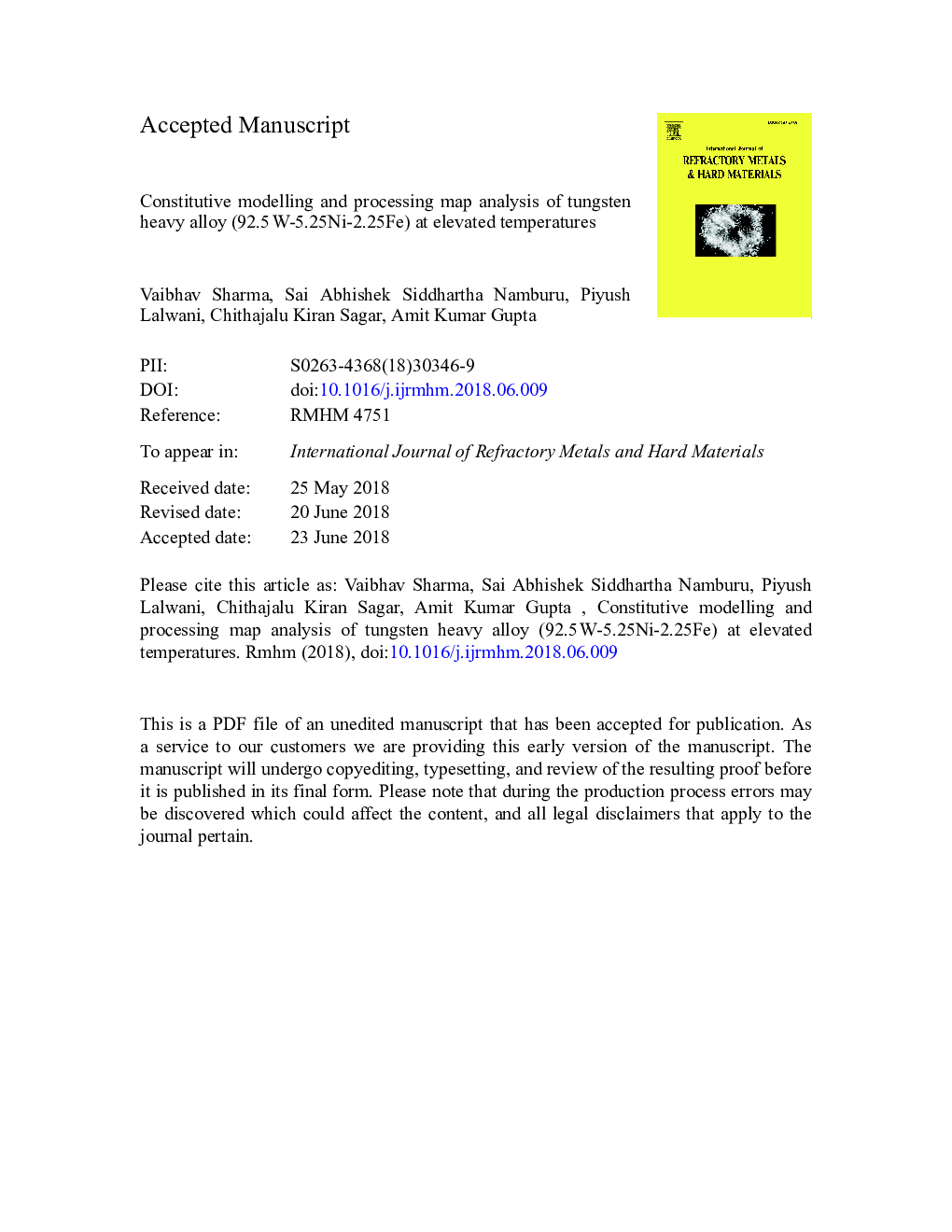| Article ID | Journal | Published Year | Pages | File Type |
|---|---|---|---|---|
| 7989505 | International Journal of Refractory Metals and Hard Materials | 2018 | 27 Pages |
Abstract
Tungsten Heavy Alloys (WHA) are finding increasing applications in the kinetic energy penetrators. For developing the accurate simulation models of deformation processes on WHA, it is essential to properly understand the flow stress behavior of these alloys considering the combined effects of strain, strain rate and temperature. This paper focuses on developing various constitutive models for 92.5â¯W-5.25Ni-2.25Fe alloy by using the flow stress data at six different temperatures (298â¯K, 573â¯K, 773â¯K, 973â¯K, 1173â¯K, 1373â¯K) and three different strain rates (1600, 2500, 4000â¯sâ1). Four constitutive models, namely, modified Johnson-Cook (m-JC), modified Zerilli-Armstrong (m-ZA), modified Arrhenius (m-Arr) and modified Khan-Huan-Liang (m-KHL) models have been developed to predict the flow behavior. The predictions of these constitutive models have been compared with the experimental values using statistical measures like correlation coefficient, average absolute error and its standard deviation. Based on these statistical measures, m-Arr and m-ZA models have been found to be better models for predicting the flow stress values. In addition, using the flow stress curves, the strain rate sensitivity values have been computed for determining the efficiency of power dissipation and instability parameter for the deformation process. Superimposing the efficiency map over the instability map, the processing maps have been developed for better understanding of response of a material to the imposed experimental parameters.
Related Topics
Physical Sciences and Engineering
Materials Science
Metals and Alloys
Authors
Vaibhav Sharma, Sai Abhishek Siddhartha Namburu, Piyush Lalwani, Chithajalu Kiran Sagar, Amit Kumar Gupta,
